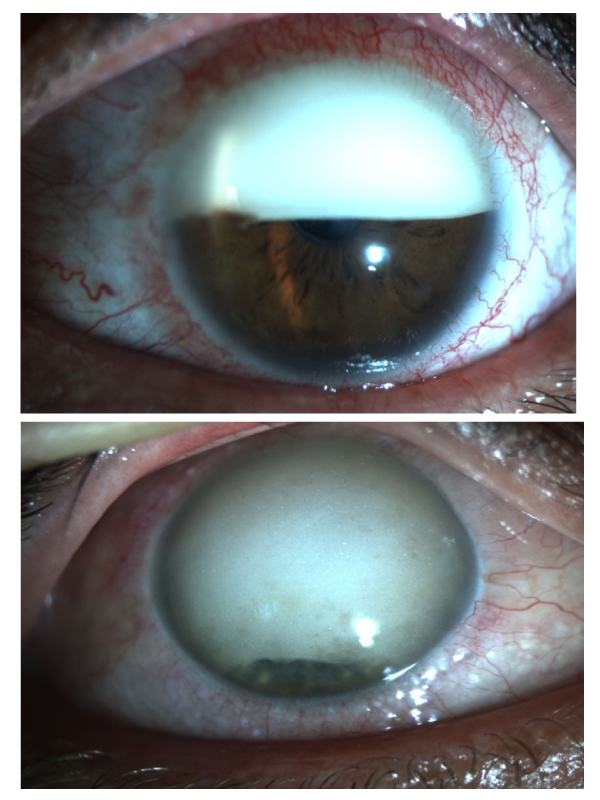2376-0249
Clinical-Medical Image - International Journal of Clinical & Medical Images (2016) Volume 3, Issue 5

Author(s): Yasemin Ozdamar Erol and Merve Inanc
A 41-year-old man and 38-year-old woman presented for ocular examination. The visual acuity of the left eye was hand motions in both patients. Anterior segment examination showed “reverse pseudohypopyon” in the left eye, which was emulsified silicone oil migrating from the posterior chamber after a previous retinal detachment surgery (RDS) (Figures 1 and 2). Both patients underwent RDS 2 years ago but they did not present for following ocular examinations. The silicone oil as an intraocular tamponade has been commonly used for repair of complicated retinal detachment. If it is not surgically removed for a long time, it can be emulsified. Emulsification can generate oil droplets and they can migrate into the anterior chamber from posterior. Because silicone oil has a lower density than aqueous, it has been located in the anterior chamber superiorly and has been named as “reverse pseudohypopyon”. These cases highlight a possible complication of silicone oil and the importance of follow-up care.
 Awards Nomination
Awards Nomination

